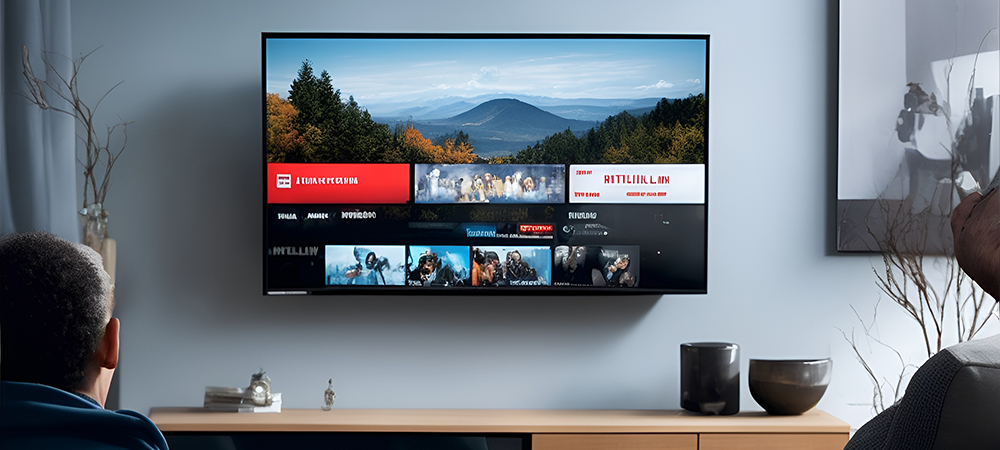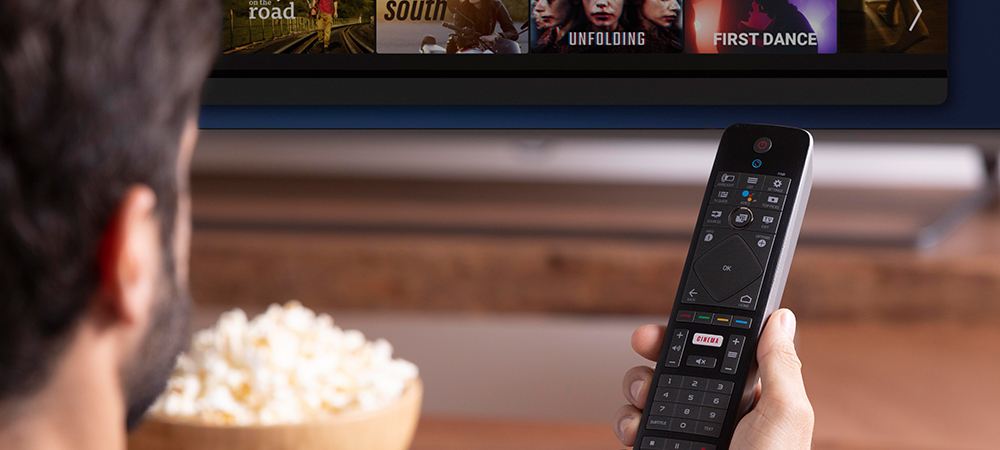Connected TV (CTV) advertising is a rapidly growing market with a lot of potential. Here are some of the latest trends in CTV advertising in 2023:
| Key Summary |
| CTV (Connected TV) ad spend is projected to grow by a 19% compound annual growth rate (CAGR) in 20231 |
| CTV ad spend has grown 50% annually since 2018 and is expected to represent 16.5% of display advertising spend by 20232 |
| As an emerging ad channel, CTV is forecasted to experience a threefold growth between 2019 and 20263 |
| Platforms like Netflix and Disney+ adopting hybrid ad-supported subscription models are setting the standards for AVOD (Advertising Video on Demand) in the industry4 |
| Connected TVs attracted 33% of streaming video ad budgets in Q2 2022, up from 28% in the previous year, and accounted for 53% of standard ad spend5 |
| CTV ad spending increased by 57% in 2021, reaching $15.2 billion, and is projected to grow by 39% to $21.2 billion in 20226 |
| The transition to programmatic TV is generally being well-received by advertisers due to the advantages of data-driven, highly-targeted, and measurable campaigns7 |
| CTV ad spending is expected to increase to approximately $24 billion in 2023, representing a 26.5% to 26.7% growth over 20228 |
Introduction
Television has undergone a remarkable evolution since the invention of the cathode ray tube. Remember the times when families gathered around a box-like appliance, anticipating the start of their favorite weekly show? A lot has changed since then! Now, we have sleek screens mounted on our walls, delivering a myriad of content directly from the internet. The remote has turned into an all-powerful wand, allowing us to dictate what, when, and how we watch. This rapid digital transformation has brought forward a new era of Connected TV Advertising.
Evolution and importance of Connected TV Advertising
When TVs first arrived on the scene, commercials were often long, live-read endorsements by the show’s hosts. Fast forward a few decades, and we have ultra-precise, data-driven advertisements that are highly personalized and interactive. Isn’t that fascinating? This modern blend of traditional TV viewing and digital capabilities is what we refer to as Connected TV Advertising.
Connected TV advertising has become a key player in the marketing world. Why, you ask? Well, the answer is pretty straightforward. As audiences increasingly shift from traditional broadcast TV to streaming platforms, advertising needs to keep up. In a world where the viewer is in control, Connected TV advertising allows advertisers to engage their target audience on their terms, offering them more relevant, engaging, and interactive content. Isn’t that a win-win situation?
Main trends to watch out for in 2023
As the world of Connected TV Advertising continues to evolve at a breakneck pace, it’s essential to keep up with the latest trends. So, what’s been catching our eye in 2023? We’ll deep dive into the rise of AVOD (Advertising-supported video-on-demand), an emerging favorite among consumers who prefer not to pay subscription fees. We’ll explore the impressive growth of programmatic advertising, a software-aided wonder that’s making ad buying and selling more efficient than ever.
We’ll also delve into the fascinating realm of data-driven targeting. With big data at our fingertips, we can tailor ads to match viewers’ preferences precisely. Pretty cool, right? And then there’s interactive advertising, a game-changer that makes viewers active participants in the ad experience.
Finally, let’s talk about voice search. The ease of uttering a command to find your favorite show or movie? That’s pure magic! This rapidly growing feature is yet another facet of Connected TV that’s transforming the way we consume content.
We’re about to embark on a journey exploring the trends shaping Connected TV Advertising in 2023.
The Rise of AVOD
Imagine having the freedom to watch your favorite TV shows and movies, without digging deep into your pocket for subscription fees. Sounds good, doesn’t it? That’s exactly what AVOD, or Advertising-Supported Video On Demand, offers. It’s a rising star in the world of Connected TV, and it’s making quite a buzz!
What is AVOD?
AVOD is like a modern twist on the traditional TV model. It’s a platform that offers video content for free, but with a small catch – advertisements. In essence, instead of users paying to watch content, advertisers foot the bill. Now, you might think, “Wait, that’s just like regular TV with commercials!” And you’d be right, but AVOD brings the personalized, on-demand features of digital media to the mix. A great blend, don’t you think?
Popularity and growth of AVOD in 2023
Now, let’s talk numbers, shall we? It’s not just hype; AVOD is genuinely soaring high! As of 2023, AVOD accounts for a whopping 50% of all Connected TV viewing. That’s right, half of the entire CTV audience has jumped onto the AVOD bandwagon. Quite impressive, don’t you agree?
Increase in AVOD usage among consumers
So, what’s driving this massive shift towards AVOD? Firstly, it’s the “free” tag. Who doesn’t like free stuff? Secondly, AVOD platforms offer a vast library of content. Whether it’s blockbuster movies, binge-worthy series, or exclusive shows, there’s something for everyone! Moreover, in a tough economy, AVOD offers a budget-friendly alternative to paid subscriptions, attracting a broader audience base. Lastly, with smart ad-targeting, viewers find the ads more relevant and less intrusive. A win-win situation for consumers and advertisers alike!
Impact of AVOD on Connected TV advertising landscape
AVOD’s popularity has quite an impact on the Connected TV advertising landscape. Advertisers are presented with a unique opportunity to reach a larger and more engaged audience. With precise targeting options, they can ensure their ads are seen by the right people at the right time. In addition, the interactive nature of digital ads on AVOD platforms helps foster a deeper connection with viewers. So, AVOD isn’t just changing how we watch TV; it’s transforming how advertisers convey their messages too!
Examples of successful AVOD models
Looking for successful AVOD examples? One doesn’t have to look far. Platforms like Tubi, Pluto TV, and Peacock have carved a niche in the market. Tubi, for instance, offers over 20,000 movies and TV shows, completely free. Now that’s a lot of content! Similarly, Pluto TV has partnered with over 100 providers, serving niche segments with dedicated channels. Lastly, Peacock, NBCUniversal’s AVOD service, leverages its rich library of classic and original content, capturing a significant viewer base.
The rise of AVOD is a trend worth watching. It’s a testament to the ever-evolving consumer preferences and the dynamic nature of Connected TV. So, next time you see an ad while streaming your favorite show, remember, it’s not just an ad; it’s a reflection of a seismic shift in the world of television!
The Growth of Programmatic Advertising
In a world where every second counts and precision is key, it’s no surprise that programmatic advertising is gaining momentum. In the realm of Connected TV, programmatic advertising is like a superhero; it’s efficient, precise, and time-saving. Let’s unravel the mystery behind this powerful player!
Programmatic advertising and how it works
To put it simply, programmatic advertising is the use of software to buy and sell digital advertising. But don’t let this simple definition fool you; it’s quite a game-changer! Gone are the days when ad space was bought and sold manually, a process often bogged down by negotiations and guesswork.
Programmatic advertising is all about efficiency and precision. It uses real-time bidding (RTB) to automate the buying and selling process. Advertisers specify their target audience and budget, and when a user fitting the target audience profile visits a website (or in our case, uses a connected TV), a bid for ad space is automatically placed. The highest bidder gets their ad displayed. All this happens in a fraction of a second, as the content is loading. Sounds like science fiction, doesn’t it? But it’s not; it’s programmatic advertising!
Role of programmatic advertising in Connected TV
Now, you might be wondering, “How does programmatic advertising fit into the Connected TV landscape?” Excellent question! Just as with online advertising, programmatic advertising in Connected TV allows advertisers to automate their ad buying process, reach their target audience more accurately, and gain valuable insights into their ad performance.
Remember how we talked about AVOD platforms being a goldmine for advertisers? Well, programmatic advertising is the tool that helps them extract that gold. It enables advertisers to tap into the rich audience data that Connected TVs provide, like viewing habits, content preferences, and demographic information, to name a few. With this data, ads can be tailored to match viewers’ interests, leading to higher engagement and better conversion rates.
Furthermore, programmatic advertising on Connected TV supports cross-device targeting. That means advertisers can reach viewers not only on their TVs but also on their smartphones, tablets, or laptops. It’s a true multi-screen experience!
In essence, programmatic advertising is playing a crucial role in shaping the future of Connected TV. It’s making advertising more streamlined, more personalized, and more efficient. And let’s be honest, who wouldn’t want that?
Advantages of programmatic advertising for advertisers
Let’s delve into some of the exciting benefits that programmatic advertising brings to the table for advertisers. Firstly, efficiency takes center stage. Ad buying is no longer a time-consuming task involving back-and-forth negotiations. With programmatic, it’s automated and accurate.
Secondly, with access to rich, real-time data, ads can be better targeted. Advertisers can zero in on specific demographics, behavioral traits, and content preferences, ensuring that ads reach the viewers who are most likely to be interested. Can you imagine the kind of precision this offers? It’s like a sniper’s accuracy in the world of advertising!
Thirdly, advertisers gain valuable insights about their campaigns through detailed analytics. This data-driven feedback loop helps them tweak and optimize their campaigns for better results. Also, let’s not forget about the cost-effectiveness. By reaching the right viewers at the right time, wastage is minimized, offering a better return on investment.
Trends in programmatic advertising in 2023
In 2023, programmatic advertising has been thriving with a burst of innovations and trends. One fascinating development is the increasing use of AI and machine learning. These technologies are being used to analyze data, optimize bidding strategies, and even predict viewer behavior. The future is here!
Additionally, programmatic advertising is riding the wave of Connected TV’s rise. With more viewers moving towards streaming platforms, programmatic advertising has expanded beyond traditional digital spaces. In fact, it is becoming a driving force behind effective ad strategies on Connected TV.
Case studies highlighting the success of programmatic advertising in Connected TV
Now, to bring all this theory to life, let’s look at a few case studies where programmatic advertising has made a significant impact on Connected TV.
In 2023, a renowned sportswear brand launched a new line of running shoes. Instead of a broad approach, they used programmatic advertising to target their ads to fitness enthusiasts who regularly streamed workout videos or sports events on Connected TV. By using precise, data-driven targeting, their campaign achieved a high level of engagement and a notable increase in sales. Talk about hitting the bull’s eye!
Similarly, a streaming service used programmatic advertising to promote a new series. They targeted fans of similar genres, and viewers who had previously engaged with related content. The result? A successful premiere with high viewership numbers.
These success stories paint a vivid picture of programmatic advertising’s potential in the realm of Connected TV. It’s not just about placing an ad; it’s about finding the right viewer, at the right moment, with the right message.
The Use of Data-Driven Targeting
You know, there’s something fascinating about the world we live in today; it’s a world that thrives on data. In the ever-evolving landscape of Connected TV advertising, data-driven targeting has emerged as a superpower. It’s as if advertisers have been handed a magic wand that lets them charm their perfect audience. Let’s dive in and explore this captivating realm!
Explanation of data-driven targeting
So, what exactly is data-driven targeting? It’s the practice of using insights gathered from various data sources to deliver personalized advertisements to specific audiences. Sounds quite simple, right? But the magic lies in how it’s done. With data-driven targeting, ads are no longer a shot in the dark; they’re more like a well-guided missile that hit right where it matters!
Importance and benefits of data-driven targeting in Connected TV advertising
Data-driven targeting has some significant advantages in the world of Connected TV advertising. For starters, it ensures that your ads reach the right people at the right time. With granular data about viewing habits, content preferences, and demographic information, advertisers can tailor their campaigns to meet their viewers’ specific interests and needs.
Moreover, data-driven targeting enables efficient use of ad budgets by minimizing wastage. When your ad is seen by those most likely to be interested, every penny spent counts. And lastly, it provides advertisers with valuable insights into their campaigns’ performance, helping them fine-tune their strategies for better results.
Different types of data used for targeting in Connected TV
You might be wondering, “What kind of data are we talking about here?” Well, there’s a plethora to consider. Viewer demographics, such as age, gender, and location, are a good starting point. But then, things get even more interesting. Behavioral data, such as viewing habits, genre preferences, and even viewing times, play a vital role. Additionally, advertisers can use interest data, socio-economic data, and even data from third-party sources for deeper insights.
How data-driven targeting has evolved in 2023
In 2023, data-driven targeting has seen significant advancements. With advancements in AI and machine learning, data analysis has become more precise and actionable. Advertisers can now predict viewer behavior with much greater accuracy, leading to more effective ad placements.
Furthermore, privacy regulations have influenced the way data is collected and used. With more emphasis on user consent and data security, the process of data-driven targeting is becoming more transparent and consumer-centric. It’s not just about serving ads anymore; it’s about respecting viewer preferences and building trust.
Examples of effective data-driven advertising campaigns in Connected TV
Now, let’s put theory into practice with some examples. A well-known car manufacturer used data-driven targeting for their new SUV launch. They targeted viewers who had shown interest in outdoor activities and adventure sports. As a result, their campaign had a high engagement rate and a noticeable boost in inquiries for test drives.
In another instance, a popular streaming service used data-driven targeting to promote a documentary series. They targeted viewers who had previously watched similar content and achieved impressive viewership numbers for the series.
These examples clearly illustrate the power of data-driven targeting in Connected TV advertising. With the right data and a smart strategy, advertisers can create campaigns that resonate deeply with their viewers.
The Rise of Interactive Advertising
Imagine being part of the ad you’re watching, interacting with it, and shaping your experience. Sounds intriguing, doesn’t it? Welcome to the world of interactive advertising, where viewers are not just passive consumers but active participants.
Definition and explanation of interactive advertising
Interactive advertising is a type of advertising that invites viewers to interact with the content. It’s not just about watching an ad anymore; it’s about engaging with it. This could mean clicking on a product for more information, participating in a poll, or even playing a mini-game within the ad. In essence, interactive advertising turns viewers into participants, making the ad experience more engaging and memorable.
Benefits of interactive advertising for both viewers and advertisers
For viewers, interactive advertising is a breath of fresh air. It breaks the monotony of traditional ads and offers a more engaging and fun experience. It gives viewers a sense of control over their ad experience and can make ads feel more personalized and relevant.
For advertisers, interactive advertising offers several benefits. First, it significantly boosts engagement rates. When viewers interact with an ad, they’re more likely to remember it and, subsequently, the brand. Second, it provides valuable insights into viewer preferences and behavior, helping advertisers optimize their future campaigns.
How interactive advertising is changing the viewer experience in Connected TV
Interactive advertising is transforming the Connected TV experience. Ads are no longer an interruption but an engaging part of the content. Viewers might find themselves voting for their favorite character in a reality show ad or exploring different features of a car in an automotive ad. It’s this blend of content and interactive elements that’s making advertising on Connected TV a more enriching and enjoyable experience.
Recent trends and developments in interactive advertising in 2023
In 2023, interactive advertising is becoming increasingly creative and sophisticated. We’re seeing a rise in shoppable ads, where viewers can click on a product in an ad and be taken directly to a purchase page. We’re also seeing ads that leverage augmented reality to offer immersive experiences. For instance, viewers can virtually try on clothes or makeup from the comfort of their couch.
Successful examples of interactive advertising campaigns in Connected TV
Let’s look at a few successful interactive ad campaigns on Connected TV. A major cosmetics brand launched an interactive ad where viewers could virtually try on different shades of lipstick and make a purchase, all while watching their favorite show. The campaign saw high engagement rates and a significant boost in sales.
In another example, a car company launched an interactive ad that allowed viewers to explore different features of their new model, take a virtual test drive, and even book a real test drive. The campaign was highly successful, with a notable increase in dealership visits and test drives booked.
These examples showcase how interactive advertising on Connected TV is not only engaging viewers but also driving tangible results for advertisers.
The Growth of Voice Search
Ever wished you could just say what you want to watch and have it magically appear on your screen? Well, the era of voice search has made that possible. It’s like having a personal assistant on your remote control, ready to find your favorite content at a moment’s notice.
Explanation of voice search and its rise in popularity
Voice search is a technology that allows users to search for content using voice commands instead of typing. It’s as simple as saying, “Find the latest episode of [show name]”, and voila, it appears on your screen! The ease and convenience of voice search have led to its skyrocketing popularity, making it a key feature in Connected TV.
Role of voice search in Connected TV
In the realm of Connected TV, voice search has become a game-changer. It’s made content discovery quicker, easier, and more intuitive. No more navigating through menus or struggling with typing on a remote control. Just say what you want, and it’s there on your screen. And it’s not just about finding content; you can also use voice search to control playback, adjust settings, and even interact with certain apps.
Impact of voice search on advertising and content discovery
Voice search has opened up new possibilities in advertising and content discovery. For starters, it’s made finding content more effortless and user-friendly, which means viewers are likely to explore more content and spend more time watching. This increases the opportunities for ad impressions and engagements.
Moreover, voice search data can provide valuable insights into viewer preferences, helping advertisers tailor their campaigns more effectively. And let’s not forget the potential for voice-activated ads, where viewers can interact with ads using voice commands. The possibilities are truly exciting!
Future prospects of voice search in Connected TV in 2023
In 2023, the potential of voice search in Connected TV seems limitless. With advances in AI and voice recognition, voice search is set to become more accurate, versatile, and personalized. Imagine ads that respond to voice commands, or TV platforms that suggest content based on your spoken preferences. The convergence of voice technology and TV is bound to take the viewer experience to new heights.
Examples of effective use of voice search features in Connected TV
Let’s look at some instances where voice search has elevated the Connected TV experience. A popular streaming service introduced a feature where viewers could search for movies by simply quoting famous lines. For example, saying, “May the force be with you” would bring up Star Wars movies.
Another example is a sports streaming platform that lets viewers access game stats, player information, and even switch games using voice commands. The platform saw increased viewer engagement and a positive response to this feature.
These examples underscore the transformative potential of voice search in enhancing viewer experience and engagement.
Conclusion
We’ve certainly journeyed through an exciting landscape, haven’t we? From the surge of AVOD to the intricacies of programmatic advertising, from the precision of data-driven targeting to the immersive realm of interactive advertising, and not forgetting the convenience of voice search – the world of Connected TV advertising in 2023 is truly brimming with innovation!
Key trends in Connected TV Advertising in 2023
So, let’s take a moment to recap. The rise of AVOD has given viewers more control over their viewing experience while creating more opportunities for advertisers. Programmatic advertising has transformed ad buying and selling, making it more efficient and targeted. The use of data-driven targeting has helped advertisers to reach the right audience at the right time, with the right message. Interactive advertising has turned passive viewers into active participants, making the ad experience more engaging and memorable. And last but not least, voice search has made content discovery a breeze, redefining user-friendliness in Connected TV.
Potential future developments and trends to watch out for
As we gaze into the future, the Connected TV advertising landscape promises even more evolution. We might see more advanced AI algorithms for even more precise targeting. Interactive and voice-activated ads could become the norm. Perhaps we’ll witness a new level of personalization where ads are tailored not just to our viewing habits, but our current mood or the time of day. Maybe we’ll even see the rise of new advertising models we haven’t yet imagined.
But one thing’s for sure: as technology continues to advance and viewer behavior evolves, the world of Connected TV advertising will keep pushing boundaries, redefining what’s possible, and continuously creating better experiences for viewers and more opportunities for advertisers.



